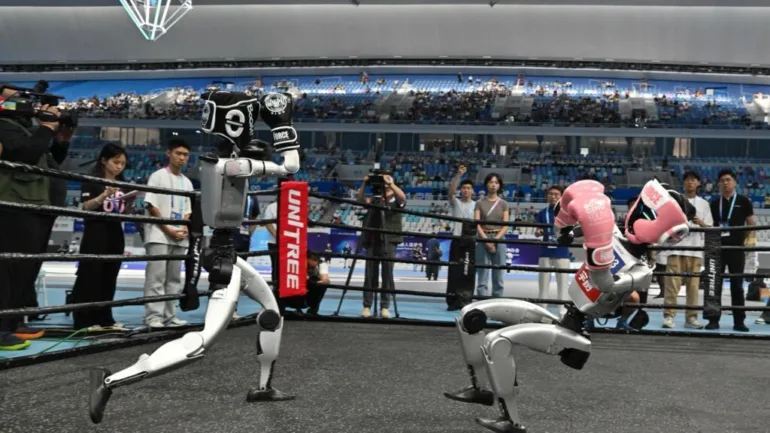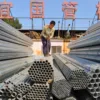The world’s first-ever Humanoid Robot Games officially opened on Friday in Beijing, where over 500 androids are competing in a wide range of events, from 100-metre hurdles to kung fu demonstrations, showcasing a blend of mechanical stumbles and promising displays of robotic prowess.
Hosted at the National Speed Skating Oval, originally built for the 2022 Winter Olympics, the event has drawn robotics teams from 16 countries, all vying for gold in events designed to push the boundaries of humanoid capabilities.
In addition to traditional sports such as athletics and basketball, the competition includes real-world tasks like medical categorisation and cleaning—highlighting the growing utility of humanoid robots in practical, everyday scenarios.
A glimpse into the future
“I believe in the next 10 years or so, robots will be basically at the same level as humans,” said 18-year-old Chen Ruiyuan, an enthusiastic spectator, speaking to AFP.
But for now, human athletes need not worry.
At one of Friday’s early events—a five-a-side football match—ten child-sized robots shuffled awkwardly around the pitch, frequently colliding, getting stuck in clusters, or toppling over simultaneously.
Still, there were moments of progress. In the 1500-metre race, robots from domestic robotics firm Unitree impressed spectators, moving briskly along the track and easily outpacing their competitors. The fastest finished in 6:29:37—well off the human men’s world record of 3:26:00, but a significant feat in robot development.
In one dramatic incident, a mechanical racer plowed into a human operator. The robot remained upright, while the human fell to the ground—fortunately uninjured.
Part of a national strategy
While robot competitions are not new, the 2025 World Humanoid Robot Games mark the first global contest focused exclusively on robots with human-like forms, according to the organisers.
The event reflects China’s broader push to lead in the field of robotics. According to a paper published Thursday by the International Federation of Robotics, humanoid robots are at the “centre of China’s national strategy.”
“The government wants to showcase its competence and global competitiveness in this field of technology,” the report stated.
In March, China unveiled a one-trillion-yuan fund to support startups in emerging technologies, including robotics and artificial intelligence. The country already holds the title of the world’s largest market for industrial robots, and in April, Beijing hosted what was dubbed the first-ever humanoid robot half-marathon.
The government is also promoting robotics education. Cui Han, who attended the games with her 10-year-old son, told AFP that his school had organised—and paid for—the trip. “I hope it will encourage him to learn more about these new technologies,” she said.
Spectacle and setbacks
Spectators were treated to both inspiration and comic relief. At the kung fu arena, a pint-sized robot resembling a character from the Transformers franchise attempted a martial arts move but collapsed face-first. It spun awkwardly on the floor, struggling to stand as the audience laughed and applauded its efforts.
For many, including young Chen who is preparing to study automation at university, the event was more than entertainment—it was motivation.
“Coming here really fuels my passion for this field,” he said. “My favorite is the boxing. It requires a lot of agility, and I can really see how the robots have improved from before.”
The Humanoid Robot Games continue through the week, offering a glimpse not only into the current state of robotics, but into the future of human-machine interaction.
AFP


